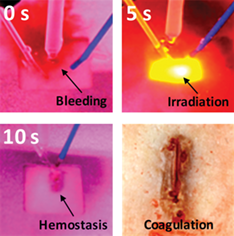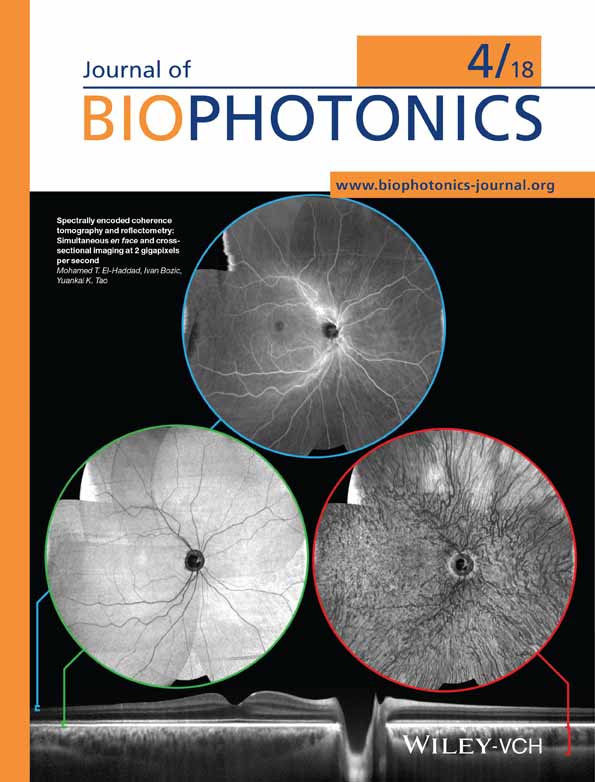Dual-wavelength-assisted thermal hemostasis for treatment of benign prostate hyperplasia
Abstract
Laser treatment on a large size of prostate gland often encounters significant bleeding that can prolong the entire procedure and cause urinary complications. The current study investigates the feasibility of dual-wavelength (532 and 980 nm) application to achieve rapid hemostasis for 532-nm laser prostatectomy. Porcine kidney and bleeding phantom models were tested to quantify the degree of the irreversible tissue coagulation and to estimate the time for the complete hemostasis, respectively. The ex vivo kidney testing verifies that the dual-wavelength created up to 40% deeper and 25% wider coagulation regions than a single wavelength does. The bleeding phantom testing demonstrates that due to the enhanced thermal effects, the simultaneous irradiation yields the complete photocoagulation (~11 seconds) whereas 532 or 980 nm hardly stops bleeders. Numerical simulations validate that the combined optical-thermal characteristics of both the wavelengths account for the augmented thermal coagulation. The dual-wavelength-assisted coagulation can be a feasible treatment to entail the rapid hemostasis and to facilitate the laser prostatectomy in an effective manner.





